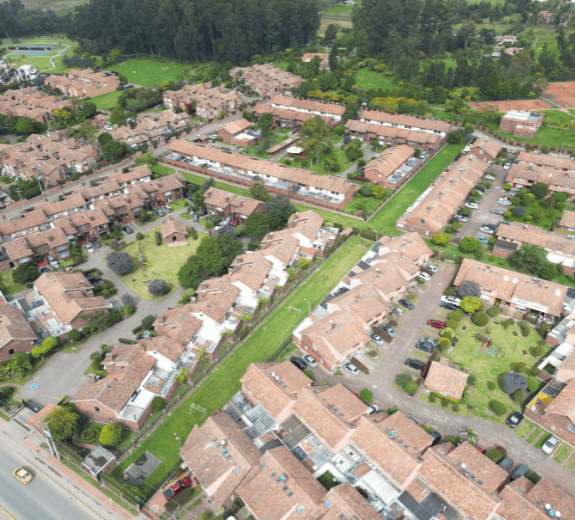How to avoid the slip-ups that cost developers thousands, delay approvals, and threaten project success.
Land Development in NSW, It’s Not Just About Dirt and Designs
When it comes to property development in New South Wales, one thing’s for sure, it’s not a space where you can wing it. The stakes are high, the timelines are tight, and the paperwork never seems to end. Yet despite the pressure, many developers, especially those new to the game, make the same costly mistakes in the certification process.
At Statewide Certifiers, we’ve seen it all, from approvals held up for months to developers blindsided by issues that could’ve been prevented with a simple early, stage checklist. So let’s break down the most common certification mistakes and how to avoid them.
1. Starting the Certification Process Too Late
Without a doubt, this is the most common and expensive mistake. Too many developers treat certification as a final step, when in reality, it should begin as soon as you have your DA or CDC.
Delaying the appointment of a certifier means you’re reacting, not planning, and by the time you realise something’s missing, it’s often too late to fix without significant cost.
Tip: Engage a certifier at the start of the project, not the end. The sooner they’re involved, the smoother your approvals will be.
2. Thinking Certification is Just a Rubber Stamp
A common misconception is that certifiers just tick a box and hand over the certificate. In truth, certifiers play a critical role in interpreting NSW planning legislation, reviewing compliance, and ensuring your development aligns with regulatory frameworks.
They’re not just gatekeepers, they’re guides. For example, in the ACT, the planning authority outlines the importance of certifiers in the completion certificate process, reinforcing that projects must meet specific standards before receiving final sign-off.
Tip: Treat your certifier as a key team member, not an afterthought.
3. Submitting Incomplete, Inaccurate, or Old Documents
Incorrect or outdated paperwork can trigger major delays. Whether it’s a missing Section 73 certificate, an outdated DA plan, or an incomplete subdivision works package, these issues slow the whole process down.
Worse still, you may be asked to resubmit, which can drag out approvals by weeks or even months.
Tip: Always check documentation against your certifier’s checklist before submission. Don’t assume your builder, planner, or engineer has it covered.
4. Underestimating Zoning Restrictions and Local Rules
Each council has its own Local Environmental Plan (LEP) and Development Control Plan (DCP), which directly impact what you can build and how.
Failing to align your design with local zoning laws means you risk rejection at the final certification stage, even if your DA was approved.
Tip: Conduct a zoning review with your certifier early. You can’t afford to find out later that your land use isn’t compliant.
5. Skipping Over Infrastructure Planning
Stormwater, sewer connections, retaining walls, kerb design, these are the types of infrastructure issues that often fly under the radar until they become a problem. And trust us, they do.
Without detailed, compliant plans upfront, your Subdivision Works Certificate can be delayed, which holds everything else up.
Tip: Work with a certifier who collaborates closely with your engineer. Don’t treat civil infrastructure as a back-of-house issue.
6. Failing to Budget for Certification and Holding Costs
Certification is often one of the last things developers budget for, but when things go wrong, it’s one of the most expensive. Every week you’re waiting for approvals, you’re paying holding costs, interest, insurances, and often, staff and consultant fees.
Tip: Include realistic timelines and certification fees in your feasibility planning. Underestimating them can blow out your margins.
7. Assuming Council is the Easier Option
Many rookie developers still think council is the “default” certification pathway, but that’s rarely the case anymore. Councils are slower, more rigid, and less responsive than private certifiers. In fact, legislative reform is happening across Australia to support better developer accountability and certification pathways, see the ACT Government’s Developer Licensing initiative as a sign of where things are heading.
Tip: Choose a private certifier who understands your region, your industry, and your timeline.
8. Believing You Can Skip Certification Entirely
Some developers try to avoid certification altogether, especially on smaller projects or when they think they’re operating under exempt development rules. This is risky territory.
If your project isn’t certified correctly, you risk enforcement action, stop-work orders, and even legal liability for non-compliant work.
Tip: Always verify what certificates are required, and confirm with your certifier before making assumptions.
9. Poor Communication Across the Team
Even experienced developers fall into the trap of assuming “someone else is handling it.” When planners, engineers, certifiers, and builders aren’t aligned, things get missed. A drainage detail goes unreviewed, a setback encroachment gets overlooked, or the latest site plan never makes it to the certifier.
Tip: Centralise communication, use cloud folders, and appoint a clear point of contact responsible for coordinating certification inputs.
10. Working With the Wrong Consultants
When you hire cheap, you often pay twice. Hiring the wrong certifier, or worse, an under-qualified one, can result in vague advice, compliance issues, and slow turnaround times.
Tip: Look for certifiers with experience in subdivisions and a background in surveying or engineering. You want someone who understands the detail.
Avoiding Mistakes Starts Early
The most successful developers in NSW don’t just react to the rules, they anticipate them. They build certification into their project strategy from day one, they communicate with their teams clearly, and they work with experts who understand the game inside and out.
If you’re planning a land development project in NSW, don’t wait until the 11th hour to talk to a certifier. At Statewide Certifiers, we help you get certified faster, avoid delays, and stay 100% compliant.
Ready to move your project forward without the usual certification stress? Let’s talk.
Frequently Asked Questions
The biggest mistake is starting the certification process too late. Developers often wait until the final stages of their project, only to realise that crucial approvals were needed earlier. This leads to costly delays, unexpected expenses, and last-minute scrambling to meet compliance requirements.
Solution: Engage a certifier early in the project, understand your required approvals, and keep up with NSW regulations to prevent delays.
The most significant update is the Low Rise Housing Diversity SEPP, which streamlines approvals for terraces, manor houses, and dual occupancies. This regulation allows private certifiers to handle approvals instead of councils, speeding up the process for developers.
Key Takeaways:
- Faster approvals but stricter design conditions.
- Specific zoning, lot size, and frontage requirements.
- Infrastructure compliance is crucial for approval.
Land certification has shifted away from council-controlled approvals, giving developers more flexibility. Private certifiers now handle many approvals, reducing red tape and shortening wait times.
Future Outlook: The industry will continue moving toward digital processes and streamlined assessments, making it easier for developers who stay informed.
The most common cause of delays is appointing a certifier too late. Missing documentation, incomplete applications, and misunderstandings about regulations can also stall approvals.
How to avoid delays:
- Engage a certifier at the DA approval stage.
- Ensure all required documents are submitted upfront.
- Follow a structured compliance checklist to prevent missed steps.
Torrens Title is used for standalone properties where each lot has direct land ownership. Strata Subdivision is for multi-dwelling developments with shared spaces, such as apartments or townhouses.
When to choose which:
- Torrens Title: Best for projects with separate land ownership.
- Strata Subdivision: Ideal for developments with shared structures.
Checkout Our Services

Subdivision Certification
Registered Subdivision (B1) Certifier
Statewide Certifiers offers services for subdivision works, including inspections and compliance certifications. Our experts ensure that subdivision works meet regulatory standards and issue completion certificates. Our services are available in nominated local government areas, providing reliable support for developers and builders.

Subdivision Works Certificates
Registered Subdivision (B1) Certifier
We provide expedient assessment and issuance of Subdivision Works Certificates (formerly Construction Certificates). As your trusted certifier, we always ensure compliance with subdivision development works requirements, offering efficient certification services to help developers move forward with their projects without delays.

Strata & Torrens Subdivision Certificates
Registered Subdivision (B1), (D1) Certifier
Statewide Certifiers specialise in Strata & Torrens Subdivision Certification, including Strata Subdivision, Community Property Conversion, and Strata Plan Subdivision under the Strata Development Act. We assess and issue Torrens Subdivision Certificates in designated areas, facilitating smooth project progression and adherence to local regulations.

Complying Development Certificates
Registered Subdivision (B1), (D1) Certifier
We issue Complying Development Certificates (CDC) for Strata and Torrens subdivisions under SEPP codes. Our experts assist with multi-dwelling project approvals, ensuring council compliance. We also provide certification for low-rise housing, including subdivision works, inspections, and plan certifications, ensuring compliance for developers and builders.



